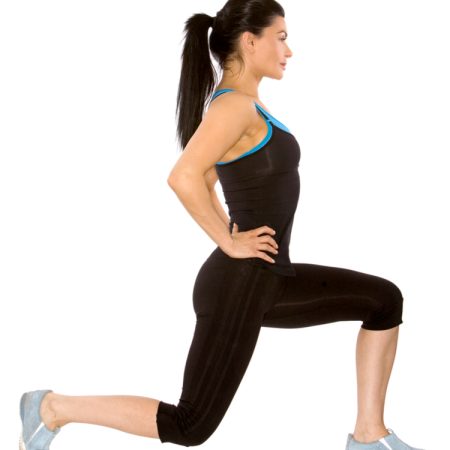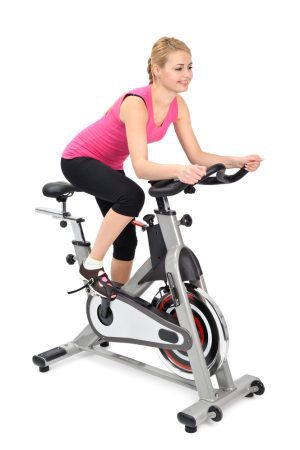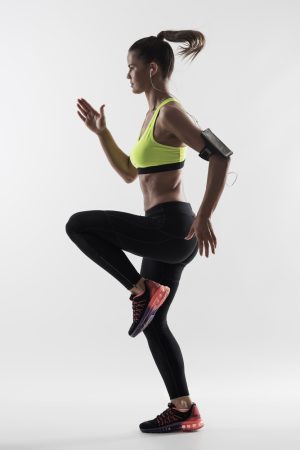
This article addresses the question what is exercise snacking, looks at what it involves, highlights its primary benefits and drawbacks, and includes some exercise snacking examples.
Workouts involve fitting short bursts of physical activity into your daily routine, enabling you to get in more movement if you don’t have the time or energy for a continuous workout.
Instead, you will do small chunks of moderately intense paced exercise when you have a few minutes to spare throughout the day. You can do this indoors or outside, with or without equipment.
While intended to work with rather than replace an existing fitness routine, micro workouts offer significant health and fitness benefits even if they are your sole source of physical activity.
Table of Contents
Who does fitness snacking best suit?
Fitness snacking suits busy people who don’t have a lot of time to exercise, new exercisers lacking stamina, and anyone who wants to get in some extra exercise.
By doing low-impact moves, it is also excellent for seniors and anyone who doesn’t have the stamina for extended workouts.
With fitness equipment being optional, it is also an excellent option for anyone who wants to avoid the expense of buying exercise equipment or lacks the space for it.
What is Exercise Snacking?
Exercise snacking is an easy way to incorporate physical activity into your daily routine anywhere and at any time without making significant changes to your everyday routine.
It involves doing short bouts of low-to-moderate intensity activities throughout the day.
This could be taking 2 or 3 x 15-minute walks, a 10-minute dance session while listening to your favorite music, 5 minutes of stretching in between work tasks, or even just taking an extra few minutes after dinner to run around outside with your kids or dog. Pretty much anything goes!
The concept is similar to Non-Exercise Activity Thermogenesis (NEAT) which you can read about by clicking this link.
Regardless of the activities you choose, research suggests that done regularly, small amounts of physical activity of at least 10 minutes can provide the equivalent health and fitness benefits of longer, sustained workouts.
They may also lead to improved focus and productivity throughout the day.
The beauty of mini workouts is that they fit into any lifestyle as they don’t require extended periods of time or equipment (other than comfortable shoes and clothing).
Fitness snacking can be done indoors or outdoors, with others, or alone. The key is to move your body more throughout the day in any way that works for you and fits within your schedule.
Exercise Snacking Video – Get Fit One Bite at a Time
Exercise Snacking Research
Research recently published in the European Journal of Applied Physiology found that when sitting for 30 minutes or more,  healthy adults who introduce brief periods of activity have more stable blood sugar levels, lowering the risks of obesity, heart disease, and Type 11 diabetes.
healthy adults who introduce brief periods of activity have more stable blood sugar levels, lowering the risks of obesity, heart disease, and Type 11 diabetes.
The activity can be as simple as walking around the room for 2 minutes or doing some Squats, making it ideal to include in an exercise snacking routine.
One 6-week study involving a group of young adults with sedentary lifestyles saw them doing 20-second bike “sprint snacks,” during which they pedaled flat out.
They did this three times a day with a one to four hour rest period between “snacks.” When retested at the 6-week mark, the participants’ cardiorespiratory fitness had improved by 9%.
A second group that worked to the same routine and time frame cycled for 10 minutes, improving their cardio fitness by 13%.
Other research published in Medicine & Science in Sports & Exercise concluded that healthy, sedentary women could improve their cardiorespiratory fitness by doing just 20 seconds of vigorous stair climbing three times a day for three weeks.
Furthermore, a collaborative study conducted by McMaster University and UBC Okanagan published in Applied Physiology, Nutrition, and Metabolism, concluded that individuals who undertook three intermittent bouts of stair-climbing daily – comprising three flights or 60 steps per bout – had cardiovascular benefits similar to those achieved by doing extended, moderately intense workouts.
It’s still unclear why fitness snacking is so effective, but it’s thought to be because short bursts of activity can improve the heart’s pumping capacity and ability to transport oxygen throughout the body.
Exercise Snacking Examples
Exercise snacking can be as simple as the above mentioned activities, walking up and down a flight of stairs, light jogging on the spot, or as challenging as a HIIT workout.
Other options include bodyweight exercises like Lunges, Squats, Push-Ups, Jumping Jacks, or lifting weights.
Exercise Snacking Fitness Equipment to Consider
While exercise snacking workouts do not require equipment, the following can help make your training more efficient:
- Free weights – Dumbbells, kettlebells, and barbells build strength and tone muscles.
- Resistance bands – Resistance bands come in various sizes and levels of tension; they’re great for targeting specific muscle groups.
- Exercise ball – An exercise ball helps you achieve better form during moves like Sit-Ups or Crunches.
- Jump rope – Jumping rope helps improve balance and coordination, tones muscles, and boosts cardio fitness.
- Yoga mat – To provide cushioning while doing floor exercises like Push-Ups or Planks.
Micro Workouts Equipment I like and Recommend
If you’re looking for a great adjustable dumbbell set to use in your micro workouts or regular strength training sessions, I highly recommend Bowflex SelectTech Adjustable Dumbbells. The set comprises a broad range of weights suiting everyone from beginners to seasoned athletes, and swapping between them is a breeze. Click here to read my review, or click this link to see them on Amazon.
Benefits of Exercise Snacking
Enhances flexibility –
Exercise snacking workouts take up little time, allowing you to stay fit while still having time for other activities or commitments throughout the day.
Improves stamina and endurance –
Recent research suggests that done regularly, this type of workout can increase stamina and endurance.
Increases energy levels –
Most forms of exercise increase the participants’ energy levels, and micro workouts are no exception.
Burns calories –
As with traditional exercise, mini workouts can help with weight management.
Offers valuable health benefits –
People who exercise snack can significantly lower their risk for cardiovascular disease, Type 11 diabetes, and other chronic illnesses.
Additionally, research has shown that shorter bouts of activity can reduce inflammation, helping to maintain healthier lipid profiles, glucose regulation, and insulin sensitivity – all critical components in promoting overall good health and well-being.
May improve mental health –
Exercise snacking appears to benefit mental health.
Done regularly, it may help fight memory loss and reduce stress levels.
It is linked to improved cognitive function, increased motivation for healthy behaviors, and a reduction in anxiety and depression as a result of endorphin release acting as a natural mood booster.
Provides variety –
Exercise snacking adds variety to workouts, keeping them fun and reducing the likelihood of boredom and a fitness plateau.
Helps protect against overuse injuries –
The variety this type of exercise offers can lower the likelihood of overuse injuries caused by repeatedly targeting the same muscle groups.
Drawbacks of Exercise Snacking
While exercise snacking offers some valuable benefits, there are also some drawbacks, as referenced below.
Risk of injury –
Exercise snacking can involve high-intensity movements, such as Jumping Jacks or Burpees, which can stress the joints and muscles. This can increase the risk of injury, especially if not done using the proper technique.
Injury is largely preventable if you stick with low-impact moves.
Limited calorie burn –
While this type of workout aids in weight loss, the short duration of each session doesn’t result in a significant calorie burn.
This can make it challenging to achieve weight loss goals through exercising snacking alone.
Scheduling constraints –
While the duration of micro workouts is short, anyone with a busy schedule may find it hard to fit in exercise snacks throughout the day.
A single 20 or 30-minute workout may be more practical for such people.
Lacks structure –
Tracking progress can be difficult with this type of workout, as can ensuring all muscle groups are being targeted.
Potential motivational issues –
Without a structured plan or program, it can be challenging to stay motivated to perform exercise snacks throughout the day.
This can make it easy to skip sessions or become inconsistent with workouts.
Exercise Snacking Workout Routines
Next, we will explore some bodyweight exercise snacking examples and their benefits.
Take a break or decrease the reps or sets if you feel overly tired or out of breath.
Squat Jumps
Squat Jumps are a practical inclusion in any exercise snack routine, providing both a challenge and an efficient workout. 
Maintain proper form and breathing during each repetition.
Keep your spine straight, look ahead, not down, inhaling through your nose, and exhaling through your mouth for the best result.
Benefits:
Squat Jumps are a great way to get your heart rate up and strengthen and tone multiple muscle groups simultaneously, including the core, quads, glutes, hamstrings, and hips.
Method –
To do a Squat Jump:
1. Start by standing with your feet shoulder-width apart, arms bent in front of you at shoulder height, and your core engaged.
2. Lower yourself into a squat position until both hips are just below parallel height to the ground.
3. Explosively jump up as high as possible, letting go of your arms for momentum.
4. Return to your starting position, landing softly on your feet.
Repeat the steps above as many times as desired.
Aim for 1-3 sets of 10 reps or more, depending on your fitness level.
Push-Ups
Push-Ups are a versatile exercise you can do almost anywhere to improve your strength quickly.
If you can’t manage a full range of motion, modify the Push-Ups by doing them while kneeling or pressing off a wall or a raised platform.
Benefits:
Push-Ups primarily activate the pectorals, deltoids, triceps, shoulders, and core muscles. If you engage your core, you will also target your abs and lower back.
Method –
To do a Push-Up:
1. Balance on your hands and knees with your arms straight down from your shoulders, palms flat on the floor, legs behind you with your toes and the balls of your feet supporting your lower body, and your arms supporting your upper body.
2. Engage your core, and with your back straight, inhale as you bend your elbows to the sides, lowering your body towards the floor until you reach a 90-degree angle.
3. Pause briefly, then exhale as you straighten your arms to return to your starting position.
Steps 1 and 2 combined count as one repetition.
For an extra challenge and to burn more calories, add variations such as pulses.
Basic Lunges
The Basic Lunge is a simple, highly effective unilateral exercise (targeting one side of your body at a time) that you can do pretty much anywhere.
Benefits:
Lunges strengthen the lower body, including the glutes, hamstrings, quads, and calves. They also improve balance.
Method –
To do a Basic Lunge:
1. Stand upright with your feet hip-width apart, toes facing forward, and your hands on your hips or by your sides.
2. Step forward with your right foot, dropping into a low lunge position so your back knee is just above the ground and both knees are bent to 90-degree angles. Your right knee should line up directly over the center of your ankle, and both feet should be pointing straight ahead.
3. Push through your heel to return to a standing position, bringing both feet together to complete one rep.
Aim for 3 sets of 8-12 reps on each leg.
Jumping Lunges –
Jumping Lunges are an advanced version of the Basic Lunge.
Benefits:
Along with the lower body benefits of the Basic Lunge, Jumping Lunges add an explosive component to challenge cardiovascular endurance further. They burn a ton of calories!
Method –
To do a Jumping Lunge:
1. Standing upright, lunge forward with your right leg into a low position so both knees are bent at 90 degrees, then jump forcefully, switching legs so your left foot is in the front and your right at the back.
2. Repeat this movement, switching legs with every lunge.
Don’t let your knees go past a 90-degree angle as you switch legs.
Aim for 10 reps per side and 3 sets.
Burpees
Burpees, AKA Squat Thrusts, are a challenging, explosive, full-body exercise that activates multiple muscle groups as it burns calories.
Benefits:
Burpees primarily work the core, increase the heart rate, and burn calories and fat.
They also improve balance, mobility, and posture.
And they help strengthen the legs, abs/core chest, shoulders, and arms, making them ideal when time restraints prevent lengthier workouts.
Method –
To do a Burpee:
1. Start by standing straight with your shoulders down and back, your feet shoulder-width apart, and your core engaged. Squat, place your hands on the floor to the front, then jump your feet back to be in a Push-Up position.
2. Push off with your feet to return to your starting position, lifting your arms above your head.
Do Lateral Squat Jumps or Tuck Jumps at the top of the Burpee to increase the challenge.
High Knees
High Knees is an effective exercises snacking workout routine that can be a great addition to your training program. It resembles marching on the spot. 
Benefits:
High Knees engage the glutes and hips while increasing the heart rate and improving coordination and balance.
Method –
To do High Knees:
1. Stand upright with your shoulders down and back, your chest lifted, core engaged, and your feet hip-width apart.
2. Lift your right knee toward your chest, and with bent elbows, swing your right arm forward and your left arm back.
3. Immediately return your right foot to the floor, then briskly lift your left knee, swinging your left arm forward and your right arm back.
Repeat this movement, alternating the leg you lift until you complete the desired number of repetitions for your exercise snacking workout routine.
To increase the difficulty, do extra reps or extend the time you are in the top position by lightly bouncing your feet before lowering them. For an additional challenge, hold a medicine ball or dumbbell at chest level while doing the exercise.
Mountain Climbers
Mountain Climbers are an intense total-body exercise well worth including in your exercise snacking routine.
It can be done almost anywhere, making it perfect for people on the go.
Benefits:
Along with the core, the primary muscles toned and strengthened are the arms, glutes, hamstrings, and quads.
Method –
1. Start in a Push-Up position with your core engaged, your spine forming a straight line from head to toe, and your hands on the floor shoulder-width apart.
2. Inhale, forcefully lifting your right knee towards your chest, simulating a running motion.
3. Exhale as you straighten your leg to return to your starting position, inhaling as you bring your left knee towards your chest.
reepeat steps 2 and 3, alternating legs for at least 30 seconds. Rest for 20 seconds, then repeat the sequence.
Don’t allow your back to sag, nor arch it, as doing either could result in back pain or an injury.
Final Thoughts on Exercise Snacking
In conclusion, micro workouts offer the means to incorporate exercise into your day without committing to a set exercise time or routine.
By breaking up your physical activity into smaller portions throughout the day rather than doing one long session, you may find it more manageable if you have a busy lifestyle or are just getting into fitness and don’t yet have a lot of stamina.
The key is to find activities that will fit into your routine and get your body moving for at least ten minutes at a stretch to gain the optimum benefit.
With workouts being so quick, simple, and effective, it makes sense to give exercise snacking a try.

